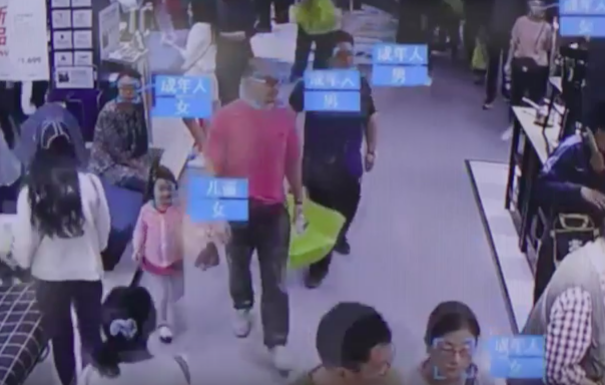China has around 100 million cameras on its streets – the highest number in the world. The government says it’s to improve efficiency and security, but it comes at the cost of a great deal of privacy.
In the west of Beijing there’s a convenience store which isn’t run by staff, but by artificially intelligent digital technology.
The ‘Eatbox’ shop is located in a busy shopping centre and is no bigger than a shipping crate.
First-time customers use their phone to scan a barcode by the entrance, then upload a selfie to the stores database. In less than a minute the customer’s face is registered online, and they may enter by standing in front of the entrance.
A facial recognition system unlocks the door, allowing the customer to enter.
Chosen goods are then scanned and paid for by mobile phone. If a customer fails to pay the exit door will refuse to open.

Beijing Tech start-up SenseTime develops surveillance cameras which not only identify individuals, but also tracks their whereabouts throughout the city, and alerts police to suspicious behaviour.
“Around the world there are about 250 million security cameras, and previously these were all monitored by a person. But our technologies can surpass human accuracy in facial recognition and object classification,” said SenseTime CEO Xu Li.
“So our cameras can better identify ‘persons of interest’ to help city management.”
Beijing-based Bloomberg technology correspondent David Ramli says the Chinese government wants to install as many smart cameras as possible to reduce the burden on public security bodies.
“This let’s them track as many people as possible with fewer men and less money.”
There are an estimated 100 million CCTV cameras installed throughout China. Surveillance is so pervasive, online users can watch livestream feeds from cameras around the country.









Join the Discussion
Type out your comment here:
You must be logged in to post a comment.